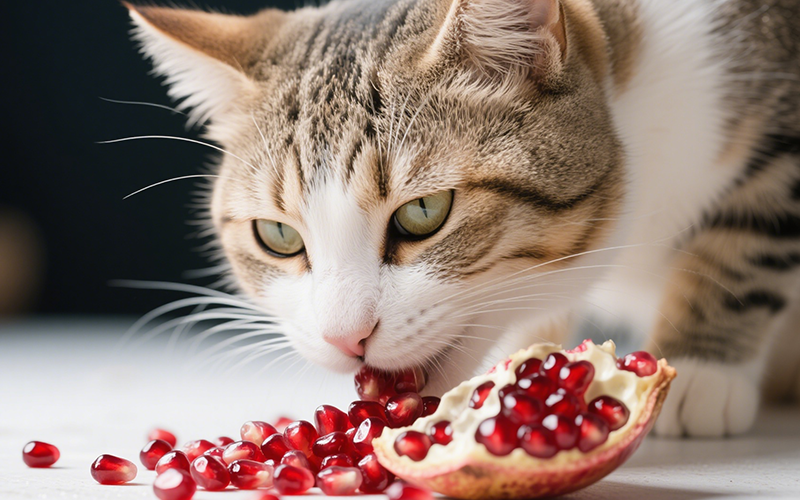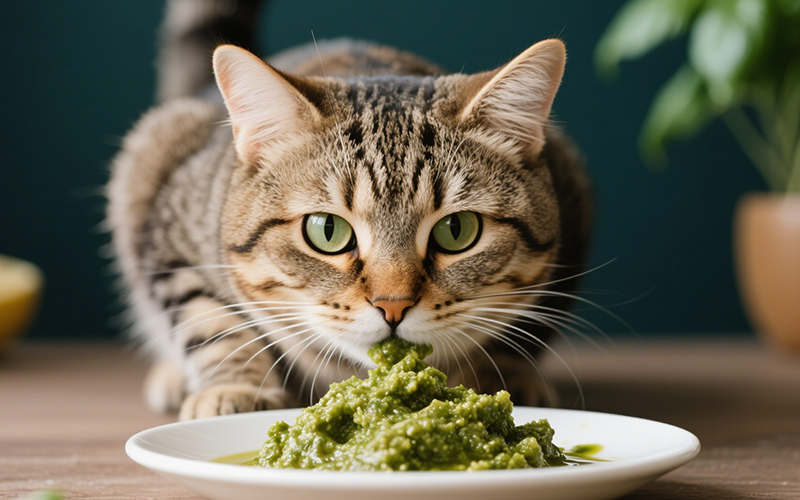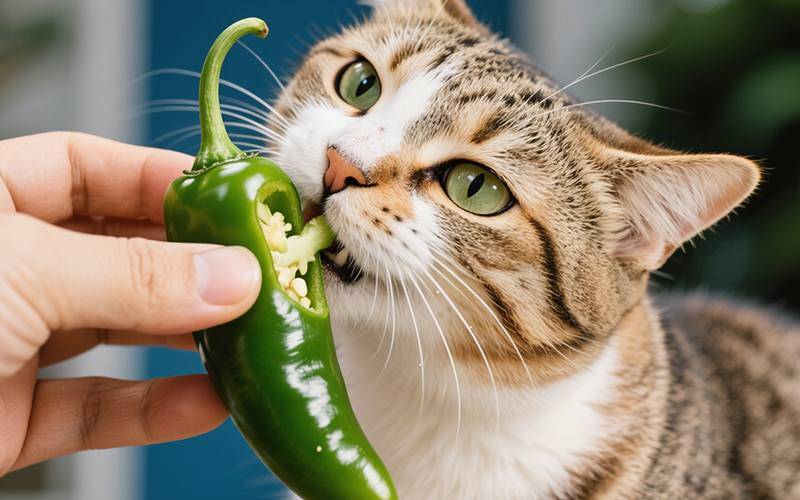Can Cats Eat Salmon Skin? Exploring the Risks and Benefits
- 10 Mar 2025 11:09
Salmon is a favorite among many cats, thanks to its rich flavor and healthy nutrients. But when it comes to salmon skin, pet owners often wonder whether it’s safe to share this part of the fish with their feline friends. While salmon skin is not inherently toxic to cats, there are some important things to consider before offering it as a treat.
In this article, we’ll discuss the pros and cons of giving your cat salmon skin, the potential risks, and how to safely serve it to your furry friend if you choose to do so.

Is Salmon Skin Safe for Cats? 🐟
Salmon skin, when prepared properly, is generally safe for cats to eat in small amounts. It’s packed with omega-3 fatty acids, which can provide health benefits, such as promoting a healthy coat, reducing inflammation, and supporting heart health. However, there are a few factors to keep in mind when offering salmon skin to your cat.
The Benefits of Salmon Skin for Cats 🐾
Salmon skin is actually a highly nutritious part of the fish. Here are some benefits that salmon skin can offer your cat:
1. Rich in Omega-3 Fatty Acids 🧡
The skin of the salmon is an excellent source of omega-3 fatty acids, which are beneficial for your cat’s overall health. Omega-3s can help support healthy skin and coat, reduce inflammation, and promote heart health. They also contribute to a strong immune system and can improve cognitive function in older cats.
2. Protein 🍗
Salmon skin contains protein, an essential nutrient for cats. Protein is necessary for building muscle, maintaining strong tissues, and providing energy. Since cats are obligate carnivores, protein from animal sources like salmon is a vital part of their diet.
3. Minerals and Vitamins 🥇
Salmon skin contains vitamins such as vitamin D, which helps regulate calcium levels and supports bone health. It also contains selenium, an essential trace mineral that contributes to immune function and antioxidant protection.
Potential Risks of Feeding Salmon Skin to Cats ⚠️
While salmon skin has many health benefits, there are several risks associated with feeding it to your cat, especially if it’s not prepared properly.
1. High Fat Content 🍔
Salmon skin is relatively high in fat, which can be problematic for cats if they eat it in large amounts. Too much fat can contribute to obesity, digestive issues, and pancreatitis, a potentially serious inflammation of the pancreas. It’s best to offer salmon skin in moderation, as a treat rather than a regular part of your cat’s diet.
2. Bones ⚠️
Like the flesh of the fish, salmon skin can sometimes contain small bones, which pose a choking hazard. If any bones are present, they can get stuck in your cat’s throat or cause injury to their mouth, esophagus, or digestive tract. Make sure to thoroughly check for any bones before offering salmon skin to your cat.
3. Risk of Contaminants 🧫
If you’re feeding your cat salmon skin, it’s important to ensure the salmon is from a safe, reliable source. Wild salmon can sometimes be contaminated with pollutants or toxins, such as heavy metals or pesticides, which can accumulate in the skin. Opt for sustainably sourced salmon that has been properly cleaned and processed to reduce the risk of exposure to harmful chemicals.
4. Seasonings and Additives 🌶️
Many people like to season their fish with salt, oil, or spices before cooking. These additives are not suitable for cats and can lead to issues like salt toxicity or gastrointestinal upset. If you want to feed your cat salmon skin, ensure that it’s cooked plain without any added seasonings, oils, or other ingredients that could harm your cat.
5. Potential for Allergies 🐱
Some cats may have sensitivities or allergies to fish, including salmon. If your cat has never had salmon or salmon skin before, introduce it gradually and watch for any signs of allergic reactions, such as itching, swelling, vomiting, or diarrhea. If your cat shows any signs of an allergy, stop feeding them salmon skin immediately and consult your vet.
How to Safely Feed Salmon Skin to Your Cat 🍽️
If you decide to share salmon skin with your cat, it’s important to prepare it properly to ensure it’s safe for them. Here are some tips for feeding your cat salmon skin safely:
1. Cook It Thoroughly 🍳
Ensure that the salmon skin is fully cooked before feeding it to your cat. Cooking kills any harmful bacteria or parasites that may be present in raw fish, reducing the risk of foodborne illness. Avoid using oils, butter, or seasonings when cooking the skin to keep it safe for your cat.
2. Remove All Bones 🦴
Before serving salmon skin to your cat, carefully remove any bones that may be present. Fish bones can cause serious harm to your cat’s digestive system, so it’s crucial to inspect the skin for any small, sharp bones.
3. Offer Small Portions 🍽️
Salmon skin should be treated as an occasional treat, not a regular part of your cat’s diet. Due to its high fat content, it’s best to feed your cat small, controlled portions. Moderation is key to avoid any potential health issues.
4. Avoid Seasonings and Additives 🚫
Make sure that the salmon skin is free from any added ingredients such as salt, oil, or spices, which can be harmful to your cat. Serving plain, cooked salmon skin is the safest option.
5. Monitor Your Cat’s Reaction 👀
After offering salmon skin to your cat, observe them for any signs of digestive upset, allergies, or other issues. If your cat experiences vomiting, diarrhea, or other adverse symptoms, discontinue the salmon skin and consult your vet.
Healthier Alternatives to Salmon Skin for Cats 🐾🍴
If you’re concerned about the risks of feeding your cat salmon skin, there are plenty of other healthy treats you can offer:
Cooked Chicken 🍗: A lean, protein-rich alternative to salmon that’s easy on your cat’s digestive system.
Canned Tuna in Water 🐟: A safe, occasional treat that many cats love.
Cat-Specific Treats 🍪: Look for healthy, specially formulated treats that are designed for cats’ nutritional needs.
How PettureX Can Help With Your Cat’s Diet and Health 🐾💡
If you’re ever uncertain about what’s safe to feed your cat, PettureX is a great resource for personalized pet health advice. PettureX is an AI-powered pet health assistant that provides 24/7 support for all your pet care questions, including nutrition. Whether you're looking for safe food options or need guidance on your cat's diet, PettureX is always ready to help.
Conclusion 🎉
Can cats eat salmon skin? While salmon skin can be a nutritious treat for cats, it should be fed with caution. The skin contains omega-3 fatty acids, protein, and vitamins, but it’s also high in fat and can contain bones that pose a choking hazard. To ensure it’s safe, always cook the skin thoroughly, remove any bones, and feed it in small portions.
As long as you serve it correctly and in moderation, salmon skin can be a tasty, healthy snack for your cat. If you’re ever unsure, PettureX is available to offer expert advice and guidance to keep your cat healthy and happy!
Related

Pomegranate Peril: Can Cats Eat the Seeds Safely? A Vet-Reviewed Guide
- 25 Apr 2025
Prickly Problem: Can Cats Eat Pineapple Leaves Safely? A Vet-Reviewed Risk Analysis
- 25 Apr 2025
The Prickly Truth: Can Cats Eat Pine Needles Safely? A Guide for Concerned Owners
- 24 Apr 2025
Pesto & Paws: A Dangerous Mix? Can Cats Eat Pesto Safely?
- 24 Apr 2025
Persimmons and Paws: Can Cats Safely Eat This Autumn Fruit? A Vet-Reviewed Guide
- 23 Apr 2025
Nutritional Yeast for Cats: Savory Sprinkle or Health Hazard? A Vet-Reviewed Guide
- 23 Apr 2025
Marshmallows and Cats: A Puffy Problem? Why Vets Say No to This Sugary Snack
- 22 Apr 2025
Kefir for Kitties? A Veterinarian-Reviewed Guide to Safety, Benefits & Risks
- 22 Apr 2025
The Burning Question: Can Cats Eat Jalapenos? A Comprehensive Safety Guide
- 21 Apr 2025
Cool Temptation: Can Cats Eat Ice Cream Safely? The Vet-Backed Truth
- 21 Apr 2025
